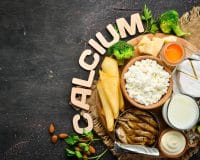6 Tips For No Longer Fearing Fat
There are tons of questions regarding healthy fats and which ones you should eat or drink, so what are the foods you should avoid, and which fats are healthy for you? When it comes to dairy, do you pick low-fat or fat-free products instead of the full-fat option? How much fat is the right amount to eat? We know that the keto diet is fat-focused, so it is important to learn everything about fats.
Fortunately, clean fats, such as avocados, are indeed healthy, and eating them is great. However, some uncertainties surrounding dietary fat exist up to this day, and more than a handful of unhealthy fats are still lurking behind our favorite foods. Here, you will be introduced to the different types of fat and how each can impact your health. Find out the six basic facts about fats that will help you kick out your fright of fat!

1Trans Fat
Liquid vegetable oils are added with hydrogen to make them more robust and extend the shelf life of a product for more than a hundred years through an industrial process, thus creating trans fats. Because this process gives an artificial, fatty, buttery taste and texture to food products and is cheap, food producers use trans fats. They are usually found in anything fried and battered: margarine, shortening, pie crusts, packaged bakery products, like cookies and donuts, and many more. Seeing partially hydrogenated vegetable oil on a product’s ingredient list is an indicator that it has trans fat.
Lowered sperm production, reduced beneficial HDL cholesterol, raised LDL cholesterol, increased risk of Type 2 diabetes, heart disease, and stroke are known results of trans fats. You must be aware of what is on the list of ingredients. If you see anything that is partially hydrogenated, stay away from it.

2Pay Attention To What You Buy
Eye-catching fat-free and low-fat labels are marketing gimmicks that you should avoid when doing grocery shopping. Products under these tags have usually undergone numerous refining procedures and are overprocessed. Any benefit they provide is overshadowed by the harm they cause the body.
It’s a good idea to choose the full-fat, organic version when eating meat, butter, yogurt, cheese, peanut butter, etc. Unfortunately, unpleasant things are added when fats are removed from foods. Salt, sugar, thickeners, and mystery ingredients are used.

3Saturated Fat
Saturated fats are found in fatty meats, full-fat dairy, lard, butter, coconut, dark chocolate, and palm and coconut oils. The perception of avoiding saturated fats at all costs is long gone. These days, we can add fat to our bulletproof coffee, like coconut oil and grass-fed butter.
Saturated fats have been perceived to be inherently bad for your health for many years; it was assumed to increase one’s cholesterol and risk of heart diseases; however, no substantial proof has been established between consuming this type of fat and increasing the risk of cardiovascular diseases. The data doesn’t give us the “go ahead” to eat more foods high in saturated fats, which include butter and bacon. However, you should never fear a small portion of grass-fed butter on your baked sweet potato.

4Polyunsaturated Fat
The following foods contain fats that are polyunsaturated: sesame seeds, sunflower seeds, hemp seeds, flaxseeds, walnuts, and fatty fish, like trout, salmon, and mackerel. The nutrients needed for the regeneration and health of the cells are provided by these fats. They are required in building cell membranes and for blood clotting.
Reducing the LDL or bad cholesterol levels in the bloodstream is linked to the consumption of polyunsaturated fats. The omega-3 and omega-6 fatty acids are necessary to make polyunsaturated fats. Your cholesterol levels and heart find these acids to be beneficial.

5Why You Need Fats
Fat is required for your body to function. Fat is responsible for starting chemical responses that affect metabolism, growth control, immune function, and reproduction; it’s needed for producing hormones, storing and producing energy, insulating and protecting organs, and supporting cell regeneration and growth. For the body to soak up crucial vitamins, fat is required. Without an adequate amount of fat, fat-soluble vitamins (A, D, E, and K) won’t be absorbed by the body properly.
Vitamin A helps your eyes stay healthy and strong, and vitamin D is required for your bones to absorb calcium. For your body to fight free radicals, vitamin E is important; for protecting your heart, building strong bones, and blood clotting, you need vitamin K. You can have a severe deficiency in these vitamins when you cut too many fats out. So how can you tell if you’re not eating the right amount of fats? Watch out for the most crucial signs, like loss of a menstrual cycle, being always hungry, poor regulation of body temperature, extreme mental fogginess, lack of clarity, and dry skin; it is advisable to see your doctor immediately if you notice any of these symptoms.

6Monounsaturated Fat
Monounsaturated fats or MUFAs can be found in foods like avocados and avocado oil, olives and olive oil, sesame oil, nuts, seeds, and dark chocolate. Lowering LDL (bad) cholesterol, reducing fatty liver, promoting heart health, and maintaining cell membranes are benefits of monounsaturated fats. They contribute to reducing insulin resistance, regulating insulin levels, and controlling blood sugar.
Based on a landmark government study, giving a fruit, veggie, lean protein, whole-grain diet with good unsaturated fats to patients with prediabetes has helped lower their risk of developing Type 2 diabetes by almost 60 percent. Numerous areas of your health will benefit when you eat these fats. You can indulge in that dark chocolate without the guilt!

Our food contains several macronutrients, and fat is one of these macros. Fat is the primary source of energy when you are on a low-carb or keto diet. Selecting the best kind and consuming the correct amount is vital. The majority of folks won’t find it necessary to keep track of fat grams or calories on a ketogenic or carbohydrate-restricted regimen.
Most people can eat as much fat as they can to feel satiated after a meal, but they must keep their carb intake low and their proteins in moderate amounts. In this article, you have learned the different types of fat and how each can impact your body and health. Here, you discovered truths about fats and what you should look for in food labels to help you get over your fear of fat. You can now enjoy keto life at its best.











